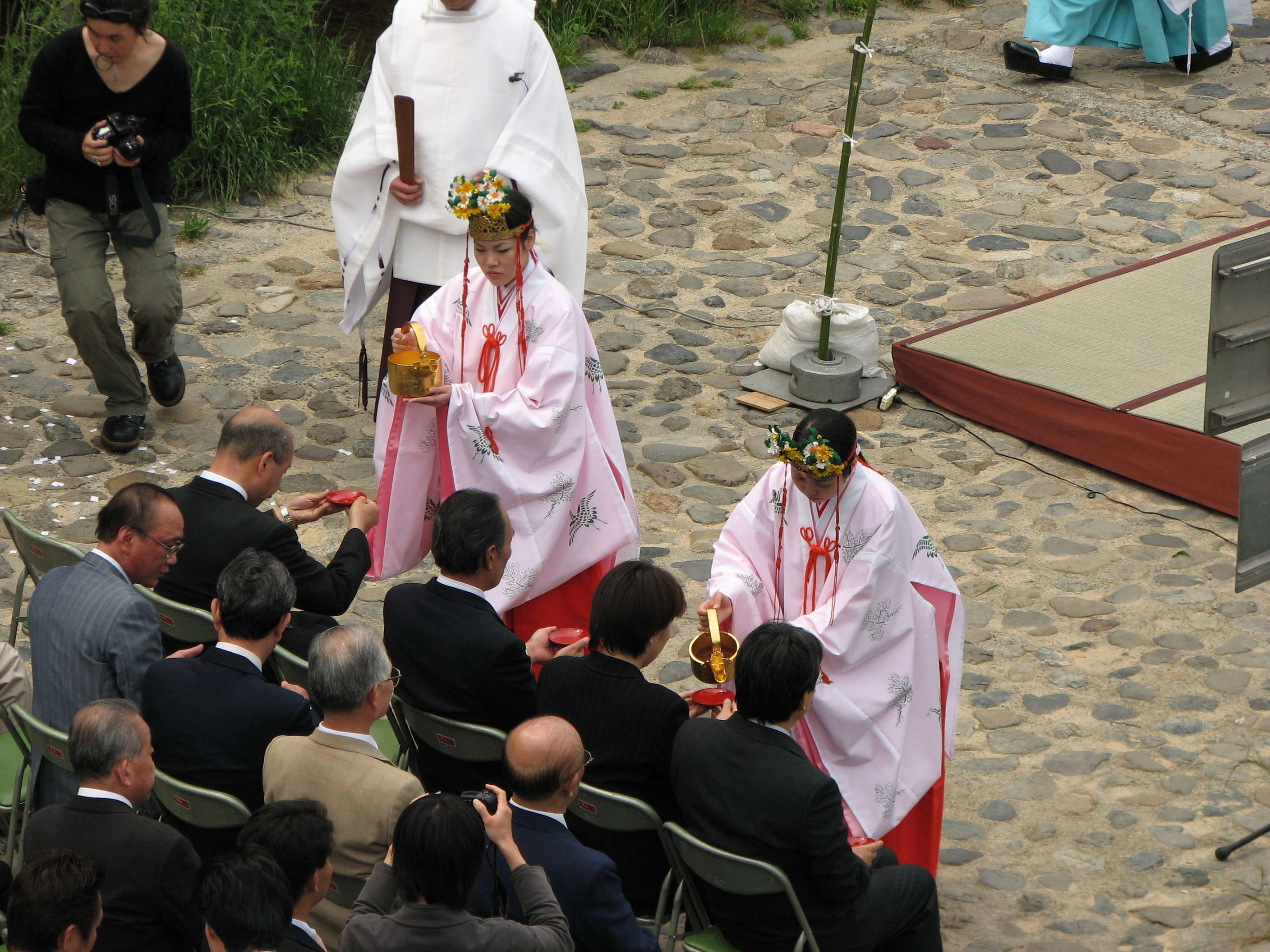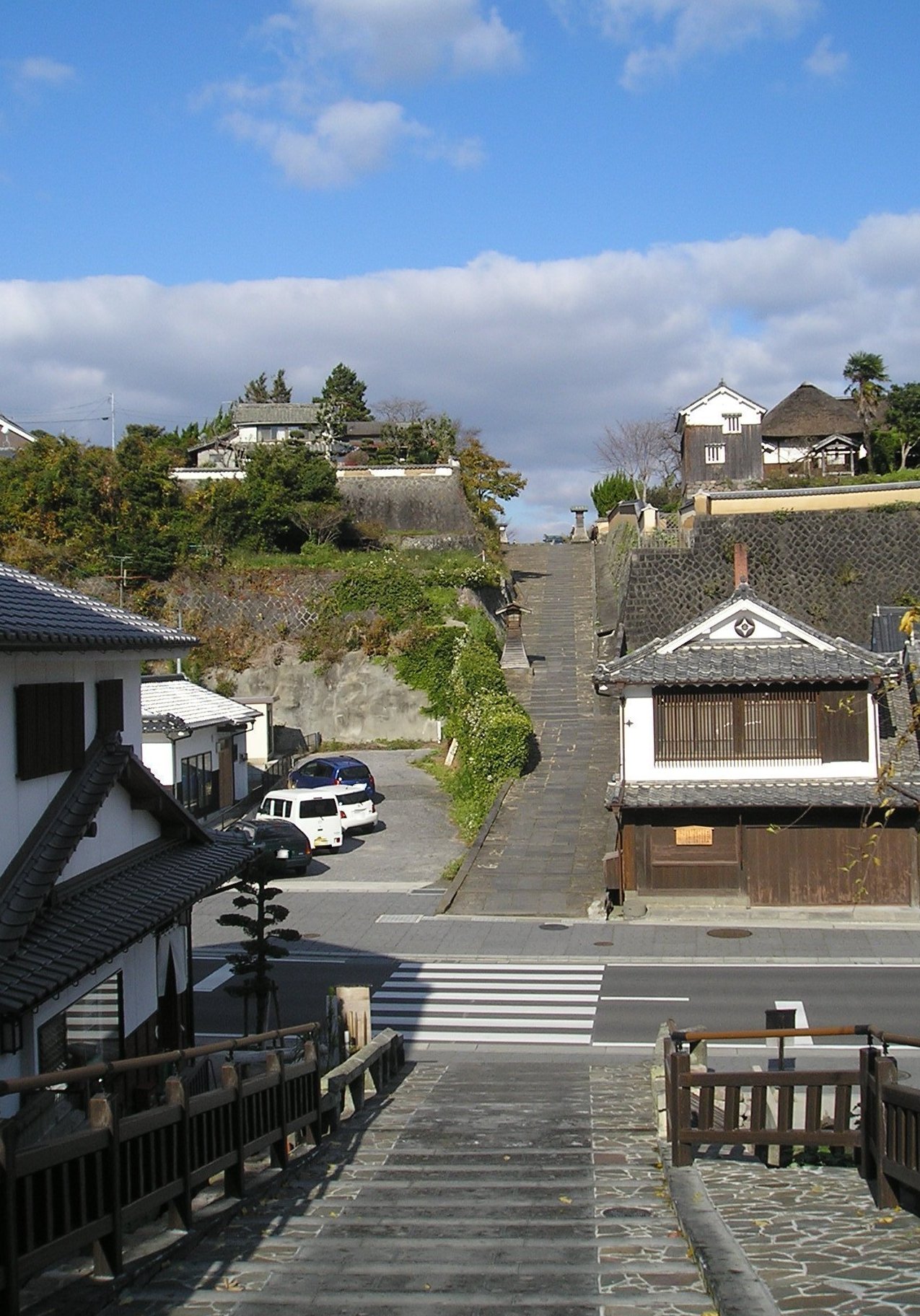|
Inugami
, like kitsunetsuki, is a spiritual possession by the spirit of a dog, widely known about in western Japan. They seemed firmly rooted until recent years in eastern Ōita Prefecture, Shimane Prefecture, and a part of Kōchi Prefecture in northern Shikoku, and it is also theorized that Shikoku, where no foxes (kitsune) could be found, is the main base of the inugami. Furthermore, traces of belief in inugami exists in the Yamaguchi Prefecture, all of Kyushu, even going past the Satsunan Islands all the way to the Okinawa Prefecture. In the Miyazaki Prefecture, the Kuma District, Kumamoto Prefecture, and Yakushima, the local dialect pronounces it "ingami" and in Tanegashima, they are called "irigami." It can also be written in kanji as 狗神. Origins The phenomenon of inugami spiritual possession was a kojutsu (also called "kodō" or "kodoku", a greatly feared ritual for employing the spirits of certain animals) that was already banned in the Heian period that was thought to ha ... [...More Info...] [...Related Items...] OR: [Wikipedia] [Google] [Baidu] |
Kitsunetsuki
, also written , literally means "the state of being possessed by a fox". The victim is usually said to be a young woman, whom the fox enters beneath her fingernails or through her breasts. In some cases, the victims' facial expressions are said to change in such a way that they resemble those of a fox. Though foxes in folklore can possess a person of their own will, is often attributed to the malign intents of hereditary Asian witchcraft#Japan, fox employers. Stories of fox possession (''kitsunetsuki'') can be found in all lands of Japan, as part of its folk religion. Stories of ''kitsunetsuki'' s have already been attested during the Heian period. From a clinical standpoint, those possessed by a fox are thought to suffer from a mental illness or similar condition. Such illness explanations were already being published by the 19th century, but the superstition was difficult to eradicate. (cf. ) Heian period The belief in ''kitsunetsuki'' dates back to the Heian Period. The ... [...More Info...] [...Related Items...] OR: [Wikipedia] [Google] [Baidu] |
Tanegashima
is one of the Ōsumi Islands belonging to Kagoshima Prefecture, Japan. The island, in area, is the second largest of the Ōsumi Islands, and has a population of 33,000 people. Access to the island is by ferry, or by air to New Tanegashima Airport. Administratively, the island is divided into the cities of Japan, city, Nishinoomote, Kagoshima, Nishinoomote, and the two towns of Japan, towns, Nakatane, Kagoshima, Nakatane and Minamitane, Kagoshima, Minamitane. The towns belong to Kumage District, Kagoshima, Kumage District. Geography Tanegashima is the easternmost and the second largest (after Yakushima) of the Ōsumi Islands. It is located approximately south of the southern tip of Ōsumi Peninsula in southern Kyushu, or south of Kagoshima, Kagoshima, Kagoshima. The Vincennes Strait (Yakushima Kaikyō) separates it from Yakushima. The island is of volcanic origin; however, unlike neighboring Yakushima, it presents a flat appearance, with its highest elevation at only above s ... [...More Info...] [...Related Items...] OR: [Wikipedia] [Google] [Baidu] |
Osaki
Osaki is a type of yokai told about in legends of Japan. They are also called osaki-gitsune. They can also alternatively be written 尾先. Other ways of writing them include 尾裂, 御先狐, 尾崎狐, among others. Concept They are in the folk beliefs of certain mountain villages of the Kantō region as well as other areas such as the Saitama Prefecture, the Okutama region of Tokyo Metropolis, the Gunma Prefecture, the Tochigi Prefecture, the Ibaraki Prefecture, the Nagano Prefecture, among other regions. There are no legends of this in Tokyo other than in Tama, and this said to be because osaki are unable to cross the Toda river (a part of Warabi-shuku) or because in Kantō Hasshū (eight Edo provinces of Kantō), there was the head of the foxes, the Ōji Inari Jinja, preventing the osaki from entering Edo. There is also a legend of an osaki that was originally a nine-tailed fox, Tamamo-no-mae, who perished at Nasu field (a field near Nasu), its golden fur flying off in ... [...More Info...] [...Related Items...] OR: [Wikipedia] [Google] [Baidu] |
Kuda-gitsune
The , also pronounced ''kanko'', is a type of spirit possession in legends around various parts of Japan. It may be known otherwise as '' osaki'' especially in the Kantō region, and also considered equivalent to the ''izuna''. It was believed to assume the guise of a small mammal and able to fit inside a pipe or bamboo tube, but normally only its keeper or user (''kitsune-tsukai'') was able to see it. The user, through the power of the ''kuda'', was believed capable of divulging a person's past or foretelling his future; this soothsayer was also capable of performing curses, bringing calamity upon targets. In regions where the superstition was held, a prospering household could be accused of achieving its prosperity because it was a house possessed by the spirit (''kuda-tsuki''). The fox (and its analogues by other names) was said to multiply in number each time a marriage took place, following the bride to her place of marriage, thus disseminating into more households. Nomenc ... [...More Info...] [...Related Items...] OR: [Wikipedia] [Google] [Baidu] |
Talpidae
The family (biology), family Talpidae () includes the true Mole (animal), moles (as well as the shrew moles and desmans) who are small insectivore, insectivorous mammals of the order (biology), order Eulipotyphla. Talpids are all fossorial, digging animals to various degrees: moles are completely subterranean animals; shrew moles and shrew-like moles somewhat less so; and desmans, while basically aquatic, excavate dry sleeping chambers; whilst the quite unique star-nosed mole is equally adept in the water and underground. Talpids are found across the Northern Hemisphere of Eurasia and North America (although none are found in Ireland nor in the Americas south of northern Mexico), and range as far south as the Montane ecosystems, montane regions of tropical Southeast Asia. The first talpids evolved from shrew-like animals which adapted to digging late in the Eocene in Europe. ''Eotalpa, Eotalpa anglica'' is the oldest known mole, it was discovered in the Late Eocene deposits of Ham ... [...More Info...] [...Related Items...] OR: [Wikipedia] [Google] [Baidu] |
学研ホールディングス
is a Japanese publishing company founded in 1947 by Hideto Furuoka, which also produces educational toys. Their annual sales are reported at ¥ 90 billion ($789 million US). Gakken publishes educational books and magazines and produces other education-related products. For nursery school age children and their caretakers, they produce items such as child care and nursing guides. For school children, they publish text books, encyclopedias, and science books. Gakken also publishes educational magazines for high school students, as well as school guides for all levels. Gakken also provides products for playrooms, study rooms, computer rooms and science rooms. Gakken also publishes general family-oriented and gender-oriented magazines in sports, music, art, history, animation, cooking, and puzzles. History Gakken is perhaps originally known for producing Denshi blocks and packaging them within electronic toy kits such as the Gakken EX-System, as far back as the 1970s. One ... [...More Info...] [...Related Items...] OR: [Wikipedia] [Google] [Baidu] |
Miko
A , or shrine maiden,Groemer, 28. is a young priestess who works at a Shinto shrine. were once likely seen as Shamanism, shamans,Picken, 140. but are understood in modern Japanese culture to be an institutionalized role in daily life, trained to perform tasks ranging from sacred cleansing to performing the sacred dance. Appearance The Miko clothing, traditional attire of a is a pair of red (divided, pleated trousers), a white (a predecessor of the kimono), and some white or red hair ribbons. In Shinto, the color white symbolizes purity. The garment put over the during dances is called a . Traditional tools include the , the (offertory -tree branches), and the . also use bells, drums, candles, , and bowls of rice in ceremonies. Definition The Japanese words and ("female shaman" and "shrine maiden" respectively)Kokugo Dai Jiten Dictionary, Revised edition, Shogakukan, 1988. are usually written as a compound of the kanji ("shaman"), and ("woman"). was arch ... [...More Info...] [...Related Items...] OR: [Wikipedia] [Google] [Baidu] |
Kitsuki, Ōita
file:杵築市役所.jpg, 270px, Kitsuki City Hall is a Cities of Japan, city located in Ōita Prefecture, Japan. , the city had an estimated population of 26,761 in 13199 households, and a population density of 96 persons per km2. The total area of the city is . Geography Kitsuki is located in east-central Ōita Prefecture at the southern tip of the Kunisaki Peninsula, across Beppu Bay from the prefectural capital at Ōita City. By land, it is approximately 35 kilometers from the center of Ōita City. The northern and western parts of the city are mountainous. Tateishi Pass, adjacent to Usa City, is the border between the former Bungo Province and Buzen Province. Neighboring municipalities Ōita Prefecture *Bungotakada, Ōita, Bungo-Takada *Hiji, Ōita, Hiji *Kunisaki, Ōita, Kunisaki *Usa, Ōita, Usa Climate Kitsuki has a humid subtropical climate (Köppen climate classification ''Cfa'') with hot summers and cool winters. Precipitation is significant throughout the year, ... [...More Info...] [...Related Items...] OR: [Wikipedia] [Google] [Baidu] |
Hayami District, Ōita
is a district located in Ōita Prefecture, Japan. As of 2003, the district has an estimated population of 35,462 and the density Density (volumetric mass density or specific mass) is the ratio of a substance's mass to its volume. The symbol most often used for density is ''ρ'' (the lower case Greek letter rho), although the Latin letter ''D'' (or ''d'') can also be u ... of 163.46 persons per km2. The total area is 216.94 km2. Towns and villages * Hiji Merger *On October 1, 2005 the town of Yamaga, along with the village of Ōta, from Nishikunisaki District, was merged into the expanded city of Kitsuki. Districts in Ōita Prefecture {{Oita-geo-stub ... [...More Info...] [...Related Items...] OR: [Wikipedia] [Google] [Baidu] |
Yamaga, Ōita
was a town located in Hayami District, Ōita Prefecture, Japan. As of 2003, the town had an estimated population of 8,590 and the density Density (volumetric mass density or specific mass) is the ratio of a substance's mass to its volume. The symbol most often used for density is ''ρ'' (the lower case Greek letter rho), although the Latin letter ''D'' (or ''d'') can also be u ... of 59.77 persons per km2. The total area was 143.71 km2. On October 1, 2005, Yamaga, along with the village of Ōta (from Nishikunisaki District), was merged into the expanded city of Kitsuki. References Dissolved municipalities of Ōita Prefecture Kitsuki, Ōita {{Oita-geo-stub ... [...More Info...] [...Related Items...] OR: [Wikipedia] [Google] [Baidu] |






